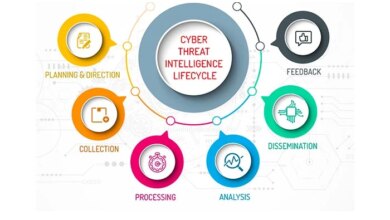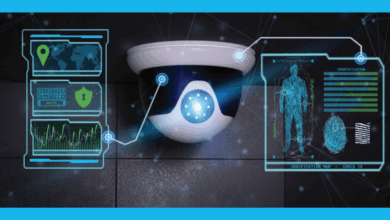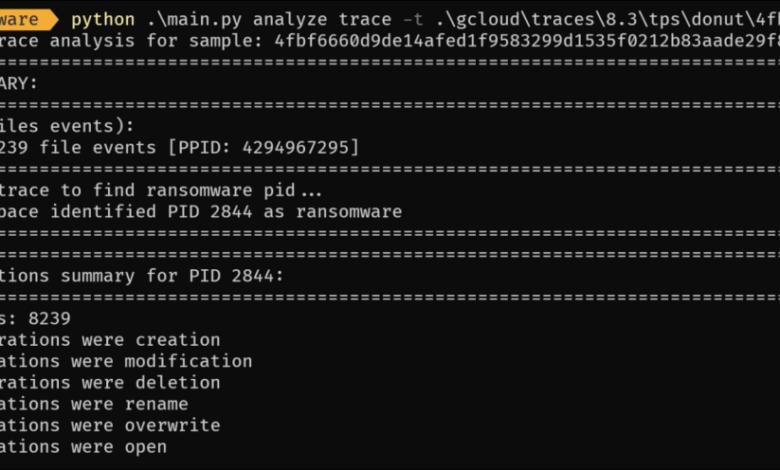
Enhancing Ransomware Defense Through Micro-Segmentation
Enhancing ransomware defense through micro segmentation of networks – Enhancing ransomware defense through micro-segmentation of networks is crucial in today’s threat landscape. Ransomware attacks, costing businesses billions annually, exploit vulnerabilities to encrypt critical data, demanding hefty ransoms for its release. Traditional network security often proves insufficient against sophisticated, lateral-moving attacks. Micro-segmentation, however, offers a powerful defense by dividing the network into smaller, isolated segments, limiting the impact of a breach.
This approach significantly reduces the attack surface and hinders the ability of ransomware to spread across the entire network.
By isolating sensitive data and applications within their own micro-segments, organizations can effectively contain ransomware infections. This strategy focuses on limiting the blast radius of a successful attack, preventing the widespread encryption of data and disruption of business operations. This detailed exploration will delve into the practical implementation of micro-segmentation, including architectural design, best practices for segmenting critical assets, and the use of advanced security controls to bolster defenses.
Introduction to Micro-segmentation in Ransomware Defense

Ransomware attacks continue to plague organizations worldwide, causing significant financial losses and reputational damage. A robust defense strategy is crucial, and micro-segmentation offers a powerful approach to significantly enhance security posture against these threats. By isolating critical assets and limiting the lateral movement of malware, micro-segmentation helps contain ransomware infections before they can spread and encrypt valuable data.Micro-segmentation is a network security approach that divides a network into smaller, isolated segments.
This contrasts with traditional network security, which often relies on perimeter-based defenses. Each segment operates as a separate entity, limiting the impact of a security breach. In the context of ransomware, this means that even if one segment is compromised, the attacker’s ability to move laterally and access other sensitive data is severely restricted. This significantly reduces the potential damage of a successful attack.
Vulnerabilities Exploited by Ransomware Attacks
Ransomware exploits various vulnerabilities to gain access to and compromise systems. Common attack vectors include phishing emails containing malicious attachments or links, exploiting software vulnerabilities (often unpatched), and leveraging weak or stolen credentials. Once inside the network, ransomware often uses techniques like lateral movement to spread to other systems, encrypting data and demanding a ransom for its release. This lateral movement is facilitated by the lack of strong network segmentation, allowing the malware to easily traverse the network and infect numerous systems.
Successfully exploiting these vulnerabilities allows ransomware to achieve its primary objective: data encryption and extortion.
Examples of Successful Ransomware Attacks and Their Impact
The NotPetya ransomware attack in 2017, while initially disguised as ransomware, caused widespread disruption across multiple industries, particularly impacting shipping giant Maersk. The attack crippled operations for weeks, leading to significant financial losses and supply chain disruptions. The WannaCry ransomware attack of 2017 similarly exploited a vulnerability in older versions of Windows, infecting hundreds of thousands of computers globally and impacting healthcare providers, transportation companies, and other critical infrastructure.
These attacks highlight the devastating consequences of successful ransomware deployments and the urgent need for stronger security measures. The cost of these attacks isn’t just financial; reputational damage and loss of customer trust can be equally significant and long-lasting.
Comparison of Traditional Network Security Approaches with Micro-segmentation
The following table compares traditional network security approaches with the benefits offered by micro-segmentation in mitigating ransomware threats:
| Feature | Traditional Network Security | Micro-segmentation |
|---|---|---|
| Network Segmentation | Broad, often limited to perimeter defenses (firewalls, etc.) | Granular, dividing the network into many smaller, isolated segments |
| Lateral Movement Prevention | Limited ability to prevent malware from spreading within the network | Significantly restricts lateral movement, limiting the impact of a breach |
| Impact of Breach | A breach can affect a large portion of the network | A breach is typically contained within a small segment |
| Recovery Time | Recovery can be lengthy and complex | Recovery is faster and less complex due to limited impact |
Implementing Micro-segmentation for Enhanced Ransomware Protection
Micro-segmentation is a powerful strategy for bolstering ransomware defenses. By dividing your network into smaller, isolated segments, you significantly limit the impact of a successful ransomware attack. Instead of a single breach potentially compromising the entire network, the damage is contained within a specific segment. This approach dramatically reduces the attack surface and the potential for lateral movement, a common tactic used by ransomware operators to spread malware and encrypt more data.Implementing micro-segmentation requires a well-defined strategy and careful planning.
It’s not simply about drawing lines on a network diagram; it’s about understanding your assets, their criticality, and the relationships between them. This granular approach allows for a more tailored and effective security posture.
Micro-segmented Network Architecture Design for Ransomware Mitigation
A robust micro-segmented network architecture for ransomware protection begins with identifying critical assets. This includes servers holding sensitive data, databases, and other high-value systems. These assets should reside in their own isolated segments, with strictly controlled access. Less critical systems can be grouped into other segments, with access rules tailored to their specific needs. For example, a segment might contain development servers, another might hold marketing resources, and another might house user workstations.
The key is to create a hierarchy of segments based on sensitivity and risk. This architecture limits the blast radius of a successful attack; if a workstation in one segment is compromised, the ransomware is far less likely to spread to the database servers in a separate, highly protected segment.
Micro-segmentation is a crucial step in enhancing ransomware defense, limiting the blast radius of a successful attack. This granular approach to network security complements broader cloud security strategies, like those discussed in this insightful article on bitglass and the rise of cloud security posture management , which highlights the growing importance of managing security posture across diverse environments.
Ultimately, a layered approach, combining strong micro-segmentation with robust cloud security, offers the best protection against modern ransomware threats.
Best Practices for Segmenting Critical Assets and Data
Effective segmentation requires a thorough understanding of your network’s topology and data flows. Prioritize the segmentation of assets containing sensitive data, such as customer information, financial records, and intellectual property. Consider employing a zero-trust model, where every device and user must be explicitly authenticated and authorized before accessing any resource, regardless of its location within the network. Regular security assessments and penetration testing are crucial to identify vulnerabilities and weaknesses in the segmentation strategy.
Furthermore, maintaining detailed documentation of the segmentation architecture is vital for ongoing maintenance and troubleshooting.
Firewall and Security Control Implementation Within Micro-segments
Firewalls are the cornerstone of micro-segmentation. Each segment should have its own firewall, controlling traffic flow in and out. These firewalls should be configured with strict rules, allowing only necessary communication between segments. Beyond firewalls, other security controls, such as intrusion detection and prevention systems (IDS/IPS), should be deployed within each segment to monitor traffic and detect malicious activity.
Regular updates and patching of all security controls are essential to maintain effectiveness. Consider employing advanced threat protection solutions that leverage machine learning to detect and respond to sophisticated attacks.
Restricting Lateral Movement with Access Control Lists (ACLs)
Access Control Lists (ACLs) are crucial for restricting lateral movement within a micro-segmented network. ACLs define which users, devices, and applications are permitted to access specific resources within a segment and across segments. Implementing least privilege principles, where users and applications only have the necessary permissions to perform their tasks, is essential. Regularly review and update ACLs to ensure they reflect the current security posture and operational needs.
For example, a database server segment might only allow access from specific application servers in another segment, and only via secure protocols. This prevents unauthorized access and limits the potential for ransomware to spread to other parts of the network.
Data Protection Strategies within Micro-segmented Environments: Enhancing Ransomware Defense Through Micro Segmentation Of Networks
Micro-segmentation dramatically alters the ransomware landscape by limiting the blast radius of a successful attack. However, robust data protection strategies are still crucial, even within a highly segmented network. A layered approach, combining preventative measures with recovery mechanisms, is essential to ensure business continuity in the face of a breach. This involves carefully considering data backup and recovery procedures, encryption techniques, and overall data security controls tailored to each segment’s unique sensitivity.Data backup and recovery strategies must adapt to the micro-segmented architecture.
Traditional centralized backup solutions may struggle with the increased network complexity and potential for isolated segment failures. A multi-faceted approach, incorporating both local and offsite backups, is often necessary to ensure data availability and resilience.
Data Backup and Recovery Strategies in Micro-segmented Networks
Implementing a robust backup and recovery strategy within a micro-segmented environment requires careful planning and coordination. Each segment should have its own localized backup solution, allowing for quicker recovery in case of a compromise within that specific segment. However, these localized backups should also be replicated to a central, secure, and preferably geographically distant location. This ensures business continuity even if an entire segment, or even the primary data center, is compromised.
Regular testing of the backup and recovery processes is crucial to validate their effectiveness and identify any potential weaknesses. Different backup methods, such as incremental backups, differential backups, and full backups, can be employed based on the data’s criticality and recovery time objectives (RTO). Automated backup scheduling and alerting systems are essential to maintain a consistent and reliable backup regimen.
Challenges in Data Replication and Recovery Across Segments
Replicating data across micro-segments presents unique challenges. Network latency between segments can impact replication speed and efficiency. Security protocols need to be carefully designed to ensure data integrity and confidentiality during transfer. The overhead of managing multiple replication points and ensuring data consistency across all segments can be significant. Implementing efficient data deduplication strategies is crucial to minimize storage space requirements and bandwidth consumption during replication.
Consideration must also be given to the potential impact on network performance and the need for robust monitoring and alerting systems to detect and address any replication failures promptly. A carefully planned and tested replication strategy, with appropriate error handling mechanisms, is essential for successful data recovery across the micro-segmented network.
Data Encryption Techniques in Micro-segmented Environments
Data encryption is a fundamental component of a robust data protection strategy within a micro-segmented environment. Encryption at rest, protecting data stored on servers and storage devices, and encryption in transit, securing data as it moves across the network, are both vital. Different encryption techniques, such as AES-256 and RSA, can be employed depending on the sensitivity of the data and the specific security requirements of each segment.
Micro-segmentation is a crucial part of a robust ransomware defense strategy, limiting the blast radius of an attack. Thinking about efficient development is key here, and that’s where exploring options like domino app dev the low code and pro code future becomes relevant; streamlined development means faster deployment of security updates and improved response times. Ultimately, faster reaction times are essential for effectively containing a ransomware attack after micro-segmentation has slowed its spread.
Key management is a critical aspect of encryption, and a secure and well-managed key management system is essential to ensure the confidentiality and integrity of encrypted data. The use of hardware security modules (HSMs) can further enhance the security of encryption keys. Implementing transparent encryption solutions, which encrypt data without requiring significant changes to applications, can streamline the deployment process.
Essential Data Security Controls for Each Segment
Effective data protection within a micro-segmented environment necessitates implementing a tailored set of security controls for each segment. The specific controls will vary depending on the segment’s criticality and the sensitivity of the data it contains.
- Access Control: Implementing strong access control mechanisms, including role-based access control (RBAC) and multi-factor authentication (MFA), to limit access to sensitive data.
- Intrusion Detection/Prevention Systems (IDS/IPS): Deploying IDS/IPS systems to monitor network traffic for malicious activity and prevent unauthorized access.
- Data Loss Prevention (DLP): Implementing DLP solutions to prevent sensitive data from leaving the segment without authorization.
- Regular Security Audits and Vulnerability Assessments: Conducting regular security audits and vulnerability assessments to identify and address potential security weaknesses.
- Security Information and Event Management (SIEM): Utilizing a SIEM system to centralize security logs from different segments and provide a comprehensive view of security events.
- Regular Patching and Updates: Ensuring that all systems within the segment are regularly patched and updated to address known vulnerabilities.
- Security Awareness Training: Providing regular security awareness training to users to educate them about the importance of data security and best practices.
Monitoring and Incident Response in Micro-segmented Networks
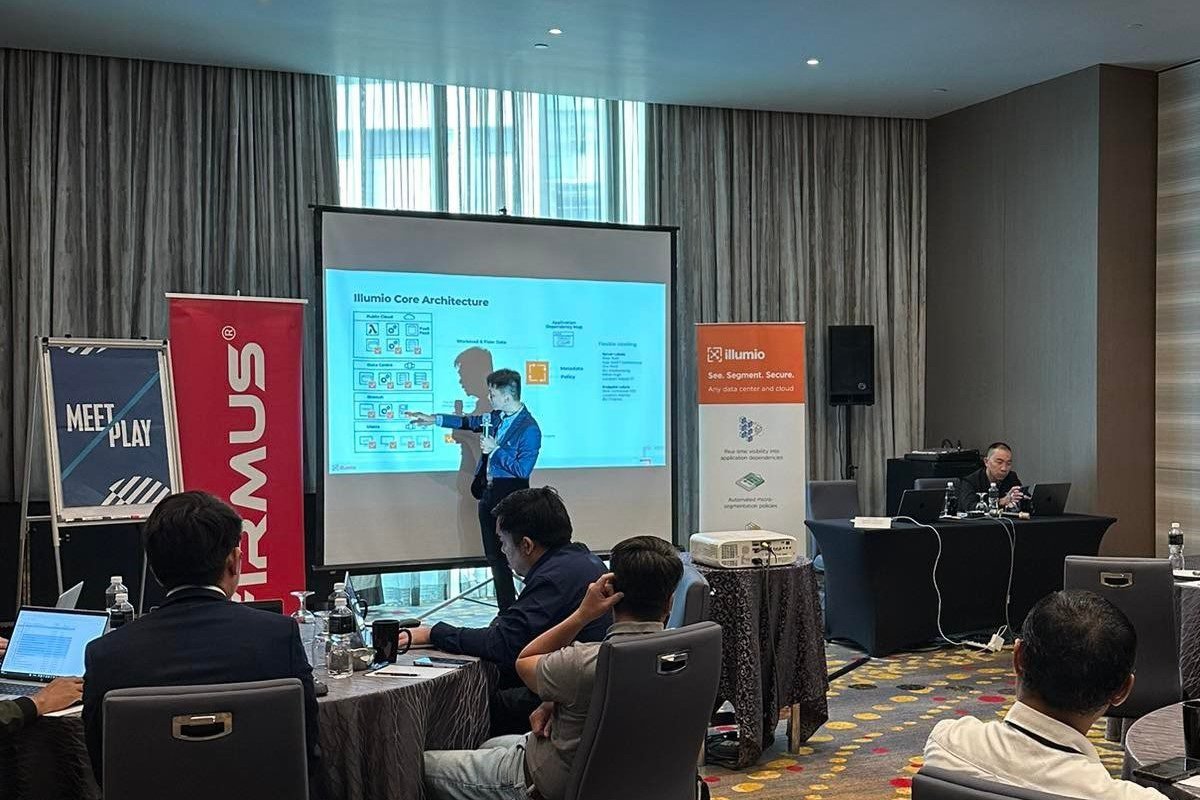
Effective monitoring and a robust incident response plan are crucial for mitigating the impact of ransomware attacks, even more so in a micro-segmented environment. While micro-segmentation significantly limits the lateral movement of ransomware, it doesn’t eliminate the need for vigilant monitoring and a well-defined response strategy. A proactive approach, combining advanced monitoring tools with a practiced incident response plan, is key to minimizing downtime and data loss.
Network Monitoring within Micro-segments, Enhancing ransomware defense through micro segmentation of networks
The granular nature of micro-segmentation necessitates a shift in network monitoring strategies. Traditional methods focusing on perimeter security are insufficient. Instead, monitoring needs to be implemented at the micro-segment level, focusing on unusual activity within each isolated segment. This requires tools capable of analyzing traffic patterns, identifying anomalous behavior, and detecting malicious code execution within each segment. Key metrics to monitor include unusual data exfiltration attempts, rapid file encryption activity, and unexpected increases in network traffic volume.
Implementing Security Information and Event Management (SIEM) systems specifically tailored to handle the increased volume and granularity of data generated by a micro-segmented network is essential.
Detecting and Responding to Ransomware Attacks in Micro-segmented Environments
Detecting a ransomware attack in a micro-segmented environment relies on the early identification of suspicious activities within individual segments. This includes real-time monitoring of file access patterns, user behavior analytics, and network traffic analysis. Upon detection of suspicious activity, the immediate response involves isolating the affected micro-segment to prevent further lateral movement. This isolation can be achieved through network segmentation tools that dynamically adjust network connectivity based on real-time threat intelligence.
Next, the infected system(s) should be immediately disconnected from the network, and a forensic analysis should be initiated to determine the extent of the breach and the type of ransomware involved. Finally, data recovery should begin, drawing from backups that are, ideally, stored in a separate, secure location outside of the affected micro-segment.
Comparison of Incident Response Strategies
Incident response in traditional networks often involves containing the spread of an attack across the entire network, a process that can be time-consuming and disruptive. In contrast, micro-segmentation significantly simplifies this process. By isolating compromised segments, the attack’s spread is automatically limited to the affected micro-segment, minimizing the overall impact. The speed and efficiency of containment are drastically improved, enabling faster recovery and reduced downtime.
While the initial detection might still require sophisticated tools in both scenarios, the remediation process is vastly more manageable in a micro-segmented network. For example, a ransomware attack in a traditional network might require shutting down the entire network or significant portions of it, impacting all users. In a micro-segmented network, the impact is confined to the affected segment, allowing other parts of the organization to continue operating.
Incident Response Process Flowchart
Technological Considerations and Limitations
Micro-segmentation, while a powerful tool against ransomware, isn’t a silver bullet. Its implementation presents several technological hurdles, performance implications, and cost considerations that organizations must carefully evaluate before deployment. A thorough understanding of these limitations is crucial for successful implementation and to avoid unexpected challenges.Implementing micro-segmentation requires significant changes to network infrastructure and security policies. This involves careful planning, specialized expertise, and potentially substantial investment in new hardware and software.
Furthermore, the complexity of managing a highly segmented network can be considerable, demanding specialized skills and potentially impacting operational efficiency.
Technological Challenges
Deploying micro-segmentation effectively necessitates a deep understanding of the organization’s network architecture and application dependencies. Incorrectly implemented segmentation can disrupt critical business processes, leading to downtime and lost productivity. The process of identifying and mapping all network flows and dependencies can be complex and time-consuming, requiring specialized tools and expertise. Furthermore, integrating micro-segmentation with existing security tools and systems can be challenging, requiring careful planning and configuration.
Compatibility issues between different vendor solutions can also arise, adding further complexity.
Performance Impacts of Micro-segmentation
Introducing numerous micro-segments can potentially impact network performance. Increased latency can occur as traffic traverses multiple security layers and enforcement points. This is particularly relevant for applications requiring low latency, such as real-time communication or high-frequency trading. Careful planning and optimization are therefore crucial to minimize performance degradation. For example, deploying micro-segmentation solutions that leverage optimized routing protocols and intelligent traffic management can mitigate performance bottlenecks.
Choosing the right hardware and ensuring sufficient capacity are also vital to accommodate the increased processing load.
Cost Implications of Micro-segmentation
The cost of deploying and maintaining a micro-segmented network can be substantial. This includes the costs of purchasing and implementing micro-segmentation software, integrating it with existing infrastructure, and training personnel. Ongoing maintenance and support costs, including updates, patches, and security monitoring, also need to be considered. The initial investment can be high, but the potential return on investment (ROI) in terms of reduced ransomware impact and improved overall security posture can be significant, especially for organizations handling sensitive data or facing high ransomware risk.
For example, a financial institution might justify the higher upfront cost due to the potential losses associated with a successful ransomware attack.
Comparison of Micro-segmentation Technologies
Different micro-segmentation technologies offer varying approaches and features. The choice of technology depends on several factors, including network size, complexity, budget, and specific security requirements.
| Technology | Approach | Features | Strengths |
|---|---|---|---|
| Network Virtualization (e.g., VMware NSX, Cisco ACI) | Virtual network overlays | Fine-grained control, scalability, automation | Highly scalable, centralized management |
| Host-based micro-segmentation | Agent-based enforcement on individual hosts | Granular control at the application level, compatibility with various OS | Easy deployment, strong application-level control |
| Network-based micro-segmentation (e.g., firewalls, policy-based routing) | Policy-based enforcement at the network level | Integration with existing network infrastructure | Relatively simpler implementation, good for existing networks |
| Agentless micro-segmentation | Leverages network traffic analysis without agents | Reduced overhead, simplified management | Lower resource consumption, simpler deployment |
Future Trends in Micro-segmentation and Ransomware Defense
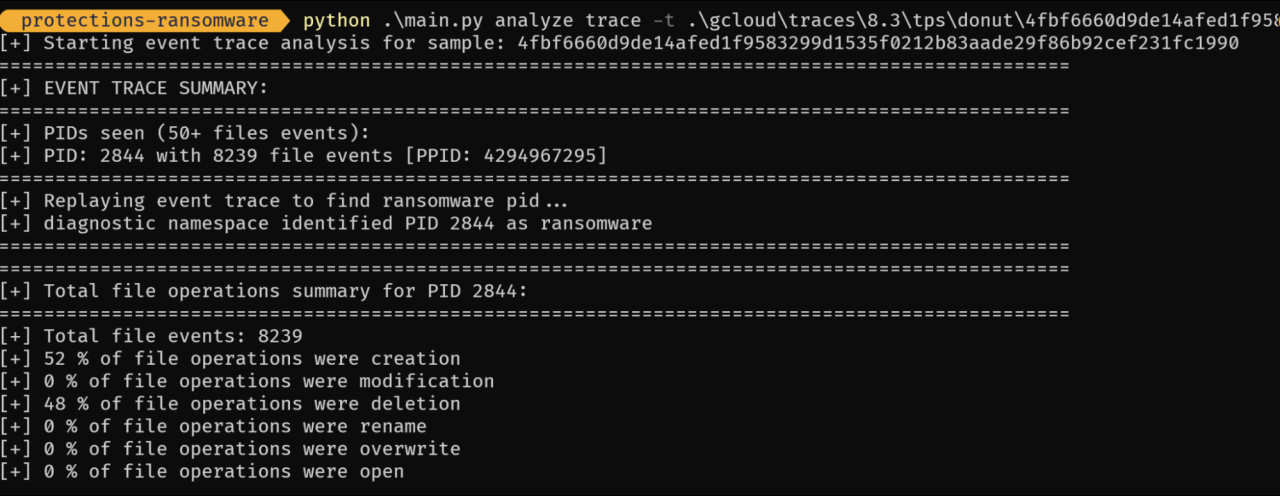
The landscape of cybersecurity is constantly evolving, with ransomware attacks becoming increasingly sophisticated. Micro-segmentation, while a powerful tool today, needs to adapt to stay ahead of these evolving threats. Future developments will focus on greater automation, intelligent threat detection, and integration with broader security strategies.The next generation of micro-segmentation will leverage AI and machine learning to a much greater extent.
This will allow for more dynamic and adaptive network segmentation, automatically adjusting based on real-time risk assessments and behavioral analysis. This proactive approach will be crucial in mitigating the speed and spread of ransomware.
AI and Machine Learning in Micro-segmentation
AI and machine learning will play a pivotal role in enhancing the effectiveness of micro-segmentation. Instead of relying solely on static rules, systems will learn to identify anomalous behavior indicative of a ransomware attack. For example, a machine learning algorithm could detect unusual file access patterns or rapid data exfiltration attempts, triggering immediate micro-segmentation adjustments to isolate the affected segment and prevent further spread.
This proactive approach is a significant departure from the more reactive measures currently in place. Imagine a system that automatically quarantines a compromised workstation based on observed deviations from its established baseline behavior, even before malicious code executes fully.
Emerging Threats Requiring Micro-segmentation Adaptation
The rise of sophisticated techniques like polymorphic malware and living-off-the-land attacks poses new challenges to micro-segmentation. Polymorphic malware constantly changes its signature, making traditional signature-based detection methods less effective. Living-off-the-land attacks leverage legitimate system tools and processes to evade detection, making it difficult to isolate them through standard segmentation. Future micro-segmentation solutions will need to incorporate advanced behavioral analysis and threat intelligence to address these threats effectively.
Furthermore, the increasing reliance on cloud services and the rise of IoT devices introduce complexities that require a more granular and adaptive approach to micro-segmentation.
Innovative Approaches Beyond Micro-segmentation
While micro-segmentation is a crucial component of a robust ransomware defense strategy, it’s not a silver bullet. Other innovative approaches are needed to create a multi-layered defense. These include:
One such approach is the use of immutable infrastructure. This approach involves using infrastructure that cannot be modified after deployment, making it significantly more difficult for ransomware to alter or encrypt critical systems. Another promising approach is the increased adoption of zero trust security models, which assume no implicit trust and verify every access request, regardless of its origin.
This model minimizes the impact of a successful breach by limiting the attacker’s lateral movement.
Furthermore, advancements in blockchain technology offer potential for secure data storage and transfer. By leveraging the immutable and decentralized nature of blockchain, organizations can protect critical data from unauthorized access and modification, significantly reducing the impact of a ransomware attack. The integration of these technologies with micro-segmentation would create a highly resilient and adaptable defense system.
Outcome Summary
In conclusion, enhancing ransomware defense through micro-segmentation provides a proactive and robust approach to mitigating the devastating effects of ransomware attacks. While implementing micro-segmentation requires careful planning and consideration of technological limitations, the benefits far outweigh the challenges. By strategically isolating critical assets and employing advanced security controls within each segment, organizations can significantly reduce their attack surface, limit lateral movement, and accelerate incident response times.
As ransomware threats continue to evolve, adopting a micro-segmented network architecture will become increasingly critical for organizations seeking to safeguard their valuable data and maintain business continuity.
Clarifying Questions
What are the common challenges in implementing micro-segmentation?
Common challenges include increased network complexity, potential performance impacts due to added security controls, and the cost of implementing and maintaining the technology. Careful planning and selection of appropriate tools are crucial to mitigate these challenges.
How does micro-segmentation impact network performance?
Properly implemented micro-segmentation should have minimal impact on network performance. However, poorly designed segmentation or overuse of security controls can lead to latency issues. Choosing efficient micro-segmentation tools and optimizing network configurations is key.
Can micro-segmentation completely prevent ransomware attacks?
No, micro-segmentation is not a silver bullet. While it significantly reduces the risk and impact, it doesn’t guarantee complete prevention. A multi-layered security approach, combining micro-segmentation with other security measures like endpoint protection and regular backups, is essential.
What types of businesses benefit most from micro-segmentation?
Businesses handling sensitive data, financial institutions, healthcare providers, and organizations with critical infrastructure are prime candidates for micro-segmentation due to the high potential impact of a ransomware attack.

